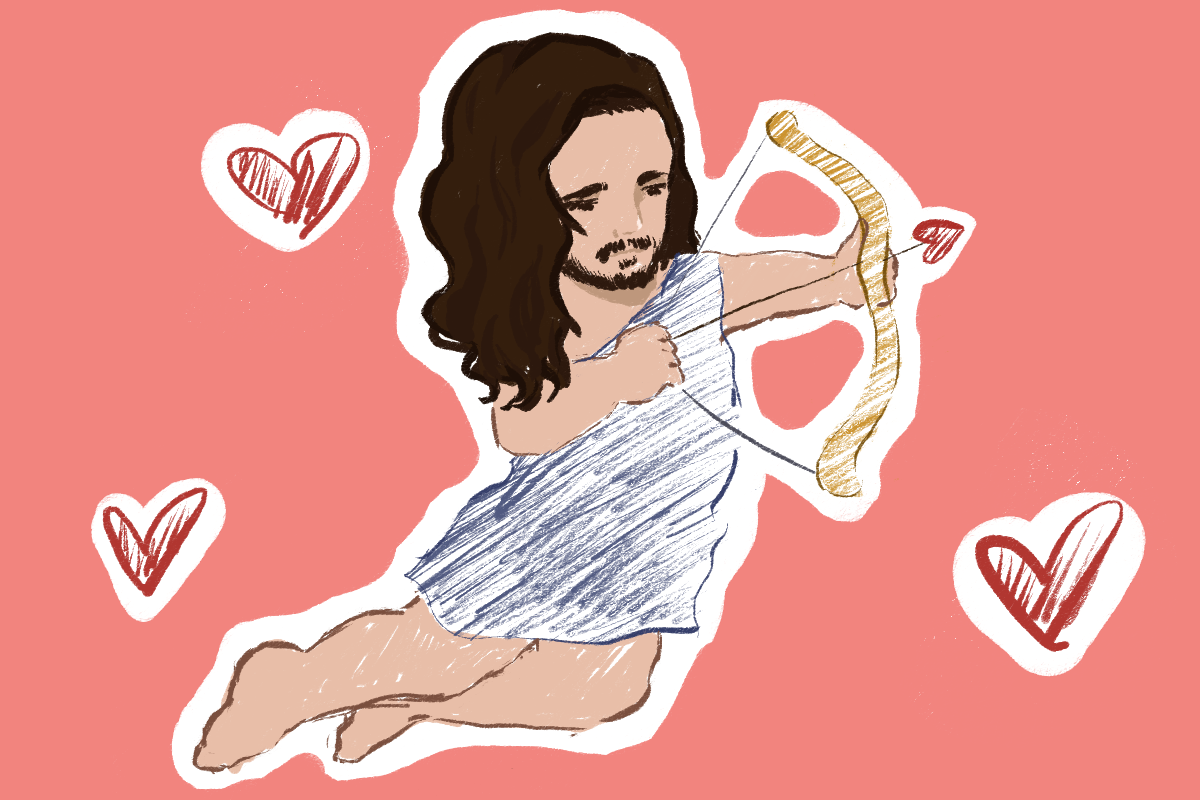I have always loved Valentine’s Day as a kid. It was the day that I felt memorable and received individualized attention from my classmates. I would patiently wait for the holiday, eager to exchange cards and candies in our personally decorated Valentine’s Day box. Receiving a handmade card featuring a drawing of your favorite animal or a candy picked out just because the person giving it knew you liked it, was particularly exciting. This meant that you were noticed.
This is what Hozier’s music feels like — being noticed. The 33-year-old Irish singer-songwriter has a certain specificity when addressing romance in his songs. This is rare in the mainstream pop scene, where love songs often force a generality in order to resonate with a broader audience. While love songs are extremely catchy, they often lack the heart that is at the core of Hozier’s work. Rather than shying away from detail, Hozier embraces it to create intimacy that he shares with the listeners.
Hozier’s three studio albums and seven EPs feature many songs dealing with the delights and dismays of love. In his love songs, Hozier can gracefully make even the saddest of scenarios seem dreamlike. Much of this can be credited to the role of instruments in his music, with his frequent use of soft acoustic guitar or light drum playing giving his songs a sense of vulnerability. Hozier’s gentle and soft vocals add to this effect as he wields his baritone voice wistfully. The dance between the vocals and instrumentals makes his music feel like an intimate conversation — almost like a confessional whisper.
My first encounter with Hozier’s music was his debut 2013 single, “Take Me to Church.” Even in my adolescence, I recognized his talent for lyricism. He sings “My lover’s got humor / She’s the giggle at a funeral” to open the song, creating a specific picture of this person he loves, even without including any physical details. Instead he’s saying that she’s funny even when it’s unexpected, and perhaps inappropriate, which makes it even better. Immediately the audience knows this woman, or some variation of her.
Mainstream pop often disregards religion, but Hozier celebrates it. In “Take Me to Church” he refers to his lover as a “goddess” who he vows to worship. Hozier also includes references to the natural world, especially in his song “Would That I.” In this piece, Hozier admits that he has been broken down by each heartbreak he’s endured, but that his lover heals him. Throughout the song Hozier compares this person to the elements, such as a “branch of a tree” or “fire.” This both grounds their love while also suggesting that his lover is a natural remedy of sorts. Hozier illustrates this person and love in a way that feels specific to their relationship, creating a sense of intimacy.
One of my personal favorite songs is “Like Real People Do.” The lyrics suggest that neither person, singer or subject, are exactly human. He writes “I will not ask you where you came from / I will not ask and neither should you,” implying that their troubled pasts are not relevant now that they have found each other. He ends the song with “we could just kiss like real people do.” It’s about leaving everything behind and embracing this love they have together, no matter how unorthodox. This sentiment is sickly sweet, and leaves audiences dreaming about a love so great that it knows no bounds.
While I am unfortunately far past the age where it’s socially acceptable to pass out Valentine’s Day goodies in class, Hozier’s love songs give me my needed fix. His beautifully crafted lyrics about those he loves feel personalized in the same way that those childhood Valentines did, and I urge you to give his music a listen if you’re missing that feeling this season.
Contact Skylar Boilard at [email protected].
























































































































































